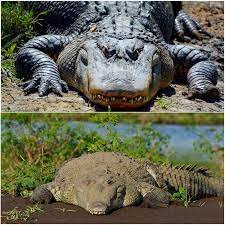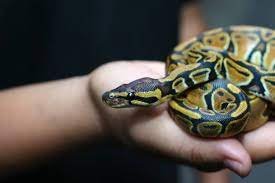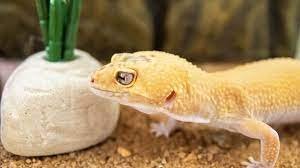Most reptiles have a low tolerance for human contact and thrive when left alone in an environment that mimics their native setting as closely as possible. Live prey, new plants, and vitamin and mineral supplements are common staples in the diets of many reptiles. Given these needs, reptiles are better pets for adults or mature children who would rather observe their pet than interact with it through play.
Some reptiles can transmit disease-causing germs to humans. People under the age of 10, those who are pregnant, the elderly, and those who have compromised immune systems are at increased risk. Any reptile, healthy or not, has the potential to infect its owner with harmful bacteria and viruses. Disease-causing organisms that can be transmitted to humans from reptiles include several species of the bacterium Salmonella, several species of the bacterium Edwardsiella, and several parasites, fungi, and protozoa.
Utilize a High-Quality Environment

When it comes to breaking free of their enclosures, reptiles, and especially snakes, can prove to be rather resourceful. Any means necessary will be used by them to “investigate.”
For the sake of the pet owner, that’s an extremely risky approach.
It’s important to use a high-quality cage when creating a suitable habitat for your new reptiles. For the safety of your selected pet, make sure the terrarium is both secure and simple to enter.
Don’t let your pet out of the cage unintentionally by buying a cheap starter kit that lacks one of these features.
Also, know Leopard Gecko – Appearance, Habitat, Diet, Feeding Guide, Care Sheet
Diet
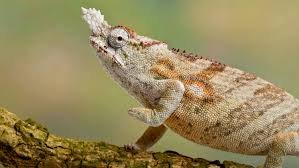
Researchers have only just begun to learn what kinds of diets reptiles need. Most advice is given based on the author’s own personal experiences and observations. Physiological processes like as digestion and feeding behavior are affected by the temperature of the surrounding environment. As a result of their slower metabolism, reptiles eat less frequently than mammals and other “warm-blooded” animals. Animals’ eating habits can be altered by environmental factors such as humidity, lighting, food variety, and company. The color of food is an important factor in whether a turtle or lizard would eat it; red and yellow are commonly favored by turtles and lizards who consume plants. Some lizards and snakes develop strong preferences for one type of food over another. One possible solution is to offer a wider range of meals at each feeding, especially to younger reptiles.
When providing your pet with whole animal feeds, quality matters. Feeding a complete and balanced diet to goldfish, mealworms, crickets, wax moth larvae, mice, or rats ensures they will give appropriate nutrition to reptiles. Animals that eat both vegetables and meat need well-rounded diets, and the same is true for herbivores. A lot of vegetarian diets are undernourished because they lack enough calories, protein, and calcium. For insects and grubs to survive, calcium must be added to their diet.
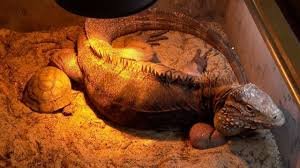
This frequent practice of “gut loading” entails providing insects with a healthy diet of grains and vegetables right before they are fed to the reptile. Mineral and vitamin powders are another popular supplements. Pet store crickets that aren’t fed properly have a negligible impact on your pet’s diet. It is possible to coat the insects with vitamin and mineral powders by placing them in a bag and shaking the bag. While it’s inevitable that some of the powder will escape, modern microfine powders hold on very effectively. Increasing the reptile’s calcium intake can also be accomplished by supplementing the crickets and wax moth larvae’s diet with calcium and calcium-rich foods.
Light bulbs that emit UVB and UVA rays

The use of UVB and UVA bulbs has been shown to boost natural activities like eating, reproducing, and immunity. Many reptiles require UVB for proper health; without it, they might become paralyzed, develop abnormalities, and even die before their time. Even though many captive animals can get by without UVB lighting, it is strongly suggested that all reptiles and amphibians have access to it. UVB bulbs should be changed out once a year as well. The UVB in the bulbs depletes over time, so animals won’t get the healthy doses they require even though the bulbs are still shining light.
Know Handling Protocols
Certain tendencies worry those well-versed in reptiles. There are frequent violations of animal handling procedures. How about those adorable chameleons? You need to have as little contact with them as possible. They’ll wear down quickly if subjected to that kind of strain on a frequent basis. If you agitate a large boa while transferring it from one cage to another, it may bite your arm, leaving a large, bleeding wound. Invest some time into reading up on how to handle your animal, how often you should handle it, and how to recognize warning signs. It’s a long-term solution to ensuring the safety of both you and your pet.
Temperament

Some semiaquatic turtles, some skinks and iguanas, and many other lizards and snakes are known to be aggressive during mating and feeding. Cage mates can be seriously injured, therefore it’s better to keep them apart during feeding time and limit the number of animals in a mating group. It is important to keep a close eye on reunited pairs when they are attempting to procreate. Keep in mind that each reptile will need a perch and/or a hiding spot, so make sure the cage is large enough. To avoid dominant animals bullying the weaker ones, it’s best to scatter food and water in several different spots.
Medication
Though most reptiles receive their antibiotics through injection, some of the tiniest species (such as real chameleons and smaller geckos) are given oral antibiotics since they don’t have enough muscle mass to tolerate an injection. In bigger reptiles, or when working near the mouth or head could be harmful, intravenous injections may be employed.
Be very careful when handling amphibians. It’s important to avoid giving them a disease or scratching their skin by keeping your hands clean and damp. To prevent overheating, avoid placing aquariums, terrariums, vivariums, and other similar enclosures near windows. Tanks exposed to direct sunlight can quickly reach temperatures that are unsafe for the contents.


